Inhibition of NMDAR reduces bladder hypertrophy and improves bladder function in cyclophosphamide induced cystitis
- PMID: 25572034
- PMCID: PMC4861050
- DOI: 10.1016/j.juro.2014.12.092
Inhibition of NMDAR reduces bladder hypertrophy and improves bladder function in cyclophosphamide induced cystitis
Abstract
Purpose: We examined the role of NMDAR in the regulation of bladder hypertrophy and function in a rat model of cyclophosphamide induced cystitis.
Materials and methods: Cystitis was induced by intraperitoneal injection of cyclophosphamide (150 mg/kg body weight). NMDAR phosphorylation (activity) and signal transduction pathways were examined by direct measurement and by specific inhibitors in vivo. Bladder hypertrophy was measured by bladder weight/body weight and type I collagen expression. Bladder function was examined by metabolic recording, conscious cystometry and detrusor muscle strip contractility in response to carbachol.
Results: NMDAR activity measured by the phosphorylation level of the NMDAR1 (NR1) subunit was expressed in the spinal cord but not in the bladder at 48 hours of cystitis. NMDAR inhibition with dizocilpine (MK-801) reduced the cystitis induced increment of bladder weight and type I collagen up-regulation in the bladder. NMDAR regulated type I collagen up-regulation was mediated by the PI3K/Akt pathway. NMDAR inhibition also attenuated cystitis induced urinary frequency measured by metabolic cage and cystometry. Cystitis decreased the responsiveness of detrusor muscle strips to carbachol, which was reversed by MK-801 in vivo. Unlike MK-801 the NMDAR antagonist D-AP5, which could not block central NMDAR activity, had no effect on bladder hypertrophy, type I collagen up-regulation or Akt activation caused by cystitis in the bladder.
Conclusions: Findings suggest that NMDAR activity has a role in cystitis induced bladder hypertrophy and overactivity. NMDAR mediated Akt activation may underlie the mechanism of bladder dysfunction.
Keywords: N-methyl-D-aspartate; collagen; cystitis; hypertrophy; interstitial; overactive; receptors; urinary bladder.
Copyright © 2015 American Urological Association Education and Research, Inc. Published by Elsevier Inc. All rights reserved.
Figures


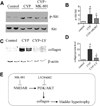
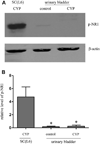
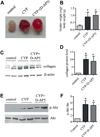
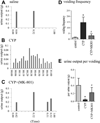
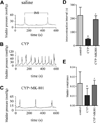
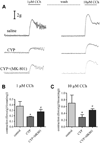
Similar articles
-
Endogenous PI3K/Akt and NMDAR act independently in the regulation of CREB activity in lumbosacral spinal cord in cystitis.Exp Neurol. 2013 Dec;250:366-75. doi: 10.1016/j.expneurol.2013.10.015. Epub 2013 Oct 30. Exp Neurol. 2013. PMID: 24184018 Free PMC article.
-
Improvement by phytotherapeutic agent of detrusor overactivity, down-regulation of pharmacological receptors and urinary cytokines in rats with cyclophosphamide induced cystitis.J Urol. 2013 Mar;189(3):1123-9. doi: 10.1016/j.juro.2012.09.054. Epub 2012 Sep 20. J Urol. 2013. PMID: 23000860
-
Involvement of interleukin-6-regulated nitric oxide synthase in hemorrhagic cystitis and impaired bladder contractions in young rats induced by acrolein, a urinary metabolite of cyclophosphamide.Toxicol Sci. 2013 Jan;131(1):302-10. doi: 10.1093/toxsci/kfs270. Epub 2012 Sep 7. Toxicol Sci. 2013. PMID: 22961095
-
Suppression of the PI3K pathway in vivo reduces cystitis-induced bladder hypertrophy and restores bladder capacity examined by magnetic resonance imaging.PLoS One. 2014 Dec 8;9(12):e114536. doi: 10.1371/journal.pone.0114536. eCollection 2014. PLoS One. 2014. PMID: 25486122 Free PMC article.
-
Effect of silymarin on bladder overactivity in cyclophosphamide-induced cystitis rat model.Phytomedicine. 2012 Jun 15;19(8-9):840-5. doi: 10.1016/j.phymed.2012.04.006. Epub 2012 May 28. Phytomedicine. 2012. PMID: 22647456
Cited by
-
PROTACs in Epigenetic Cancer Therapy: Current Status and Future Opportunities.Molecules. 2023 Jan 26;28(3):1217. doi: 10.3390/molecules28031217. Molecules. 2023. PMID: 36770884 Free PMC article. Review.
-
Uroprotective effect of pantoprazole against cyclophosphamide-induced cystitis in mice.Support Care Cancer. 2019 Nov;27(11):4273-4281. doi: 10.1007/s00520-019-04731-2. Epub 2019 Mar 14. Support Care Cancer. 2019. PMID: 30874926
-
The potential mechanism of treating IC/BPS with hyperbaric oxygen by reducing vascular endothelial growth inhibitor and hypoxia-inducible factor-1α.Turk J Med Sci. 2023 Dec 11;54(1):26-32. doi: 10.55730/1300-0144.5762. eCollection 2024. Turk J Med Sci. 2023. PMID: 38812622 Free PMC article.
-
Imatinib Mesylate Reduces Neurotrophic Factors and pERK and pAKT Expression in Urinary Bladder of Female Mice With Cyclophosphamide-Induced Cystitis.Front Syst Neurosci. 2022 Apr 22;16:884260. doi: 10.3389/fnsys.2022.884260. eCollection 2022. Front Syst Neurosci. 2022. PMID: 35528149 Free PMC article.
-
A novel deep learning segmentation model for organoid-based drug screening.Front Pharmacol. 2022 Dec 14;13:1080273. doi: 10.3389/fphar.2022.1080273. eCollection 2022. Front Pharmacol. 2022. PMID: 36588731 Free PMC article.
References
-
- McRoberts JA, Coutinho SV, Marvizon JCG, et al. Role of peripheral N-methyl-D-aspartate (NMDA) receptors in visceral nociception in rats. Gastroenterology. 2001;120:1737. - PubMed
-
- Gaudreau GA, Plourde V. Involvement of N-methyl-d-aspartate (NMDA) receptors in a rat model of visceral hypersensitivity. Behav Brain Res. 2004;150:185. - PubMed
-
- Yokoyama O. Pharmacological and genetic analysis of mechanisms underlying detrusor overactivity in rats. Neurourol Urodyn. 2010;29:107. - PubMed
-
- Yotsuyanagi S, Yokoyama O, Komatsu K, et al. Role of cyclooxygenase-2 in the development of bladder overactivity after cerebral infarction in the rat. J Urol. 2005;174:365. - PubMed
Publication types
MeSH terms
Substances
Grants and funding
LinkOut - more resources
Full Text Sources
Other Literature Sources

